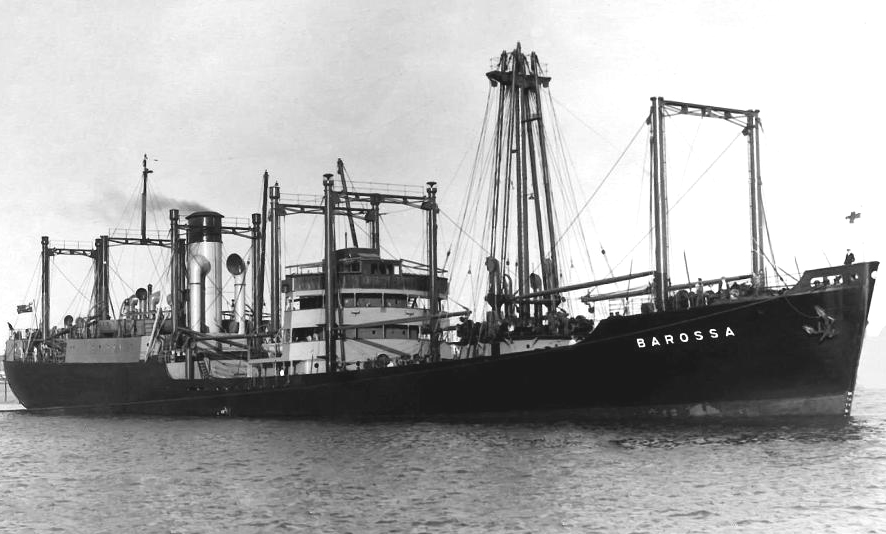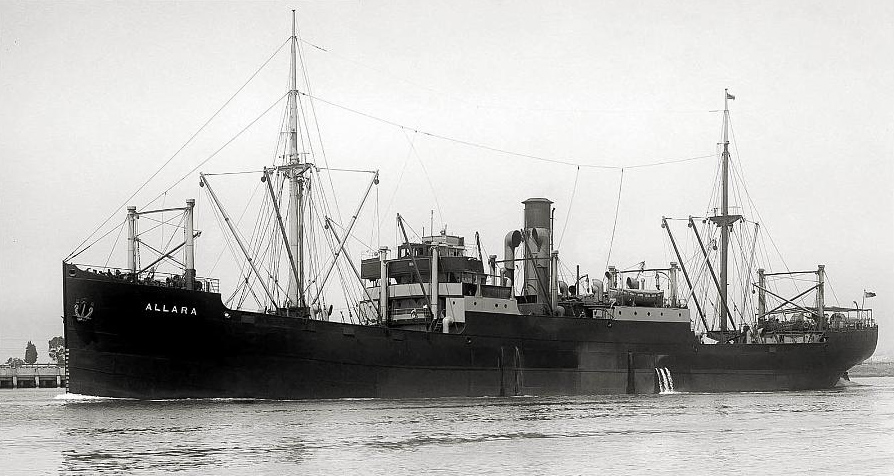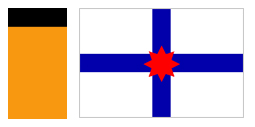Barossa (Adelaide Steam)
 One
of the many ships in Darwin Harbour when the first Japanese air raids
took place on 19 February 1942, Barossa
suffered severe damage in her own right as well as from proximity to
other casualty vessels and it was nearly three months before she
reached Sydney for major repairs. Back to sea service in March 1943,
she resumed peace-time operation in 1945.
One
of the many ships in Darwin Harbour when the first Japanese air raids
took place on 19 February 1942, Barossa
suffered severe damage in her own right as well as from proximity to
other casualty vessels and it was nearly three months before she
reached Sydney for major repairs. Back to sea service in March 1943,
she resumed peace-time operation in 1945.
Date posted: 2014-02-26 | Comments(0)
Allara (Adelaide Steam)
 Torpedoed off Newcastle by a Japanese submarine on 23 July 1942 with the loss of five crew members, she was towed to Sydney for repairs, returning to sea service in April 1943. 1945 war’s end saw Allara back in peace-time duties.
Torpedoed off Newcastle by a Japanese submarine on 23 July 1942 with the loss of five crew members, she was towed to Sydney for repairs, returning to sea service in April 1943. 1945 war’s end saw Allara back in peace-time duties.
Date posted: 2014-02-25 | Comments(0)
Adelaide Steamship Company
 This Company, floated in 1875, was an outgrowth of the need to service South Australia's pastoral and agricultural interests from as early as the mid-1850s. Embracing some earlier-formed companies, it coalesced in 1912 into the Coast Steamships Company, this in turn being taken over by the Adelaide Company in 1915. Its ships contributed to the national effort during the Great War, with Grantala (3655 gt) at risk while supporting as a hospital ship August-December 1914 the Expeditionary Force landing at Rabaul, and Willochra requisitioned in November 1914, Wandilla in May and Warilda in August for trooping, the last two (each about 7000 gt) being converted to hospital ships in August 1916, serving thus to 1918. Warilda was sunk by a submarine on 2 August 1918.
This Company, floated in 1875, was an outgrowth of the need to service South Australia's pastoral and agricultural interests from as early as the mid-1850s. Embracing some earlier-formed companies, it coalesced in 1912 into the Coast Steamships Company, this in turn being taken over by the Adelaide Company in 1915. Its ships contributed to the national effort during the Great War, with Grantala (3655 gt) at risk while supporting as a hospital ship August-December 1914 the Expeditionary Force landing at Rabaul, and Willochra requisitioned in November 1914, Wandilla in May and Warilda in August for trooping, the last two (each about 7000 gt) being converted to hospital ships in August 1916, serving thus to 1918. Warilda was sunk by a submarine on 2 August 1918.
At the start of the Second World War the company owned twenty-nine ships:
Ship |
Built |
Gross Tons |
In Service |
| Quorna | 1912 | 606 | 1913-1950 |
| Aroona | 1918 | 3116 | 1921-1949 |
| Aldinga | 1920 | 3078 | 1921-1951 |
| Oorama | 1921 | 1051 | 1921-1949 |
| Wortana | 1875 | 228 | 1922-1957 |
| Allara | 1924 | 3279 | 1924-1952 |
| Arkaba | 1924 | 4211 | 1924-1952 |
| Ulooloo | 1924 | 3236 | 1924-1957 |
| Dilga | 1920 | 3308 | 1925-1953 |
| Dundula | 1920 | 3344 | 1925-1961 |
| Mulcra | 1925 | 1175 | 1925-1961 |
| Kapara | 1914 | 846 | 1926-1942 |
| Broadway | 1921 | 738 | 1926-1953 |
| Goondi | 1923 | 346 | 1926-1955 |
| Noora | 1924 | 1072 | 1926-1956 |
| Mundalla | 1926 | 3018 | 1926-1959 |
| Momba | 1926 | 3021 | 1926-1954 |
| Katoora | 1927 | 327 | 1927-1960 |
| Minnipa | 1927 | 2014 | 1927-1960 |
| Terka | 1925 | 430 | 1928-1945 |
| Toorie | 1925 | 415 | 1928-1956 |
| Manunda | 1929 | 9155 | 1929-1956 |
| Tolga | 1925 | 418 | 1930-1946 |
| Moonta | 1931 | 2693 | 1931-1955 |
| Manoora | 1935 | 10856 | 1935-1961 |
| Beltana | 1937 | 3043 | 1937-1963 |
| Bungaree | 1937 | 3043 | 1937-1957 |
| Barossa | 1938 | 4239 | 1938-1963 |
| Bundaleer | 1939 | 4238 | 1939-1960 |
Owned by Coast Steamship Limited
Ship |
Built |
Gross Tons |
In Service |
| Karatta | 1907 | 493 | 1907-1961 |
| Warrawee | 1909 | 423 | 1909-1953 |
| Kopoola | 1912 | 293 | 1912-1955 |
| Kooraka | 1925 | 300 | 1925-1960 |
| Yandra | 1929 | 919 | 1929-1959 |
As well, Morialta (b.1940. gt. 1365.s.1940-1957) was under construction.
Sixteen of this fleet list were requisitioned or suffered the effects of enemy action: Wortana, Allara, Mulcra, Noora, Katoora, Terka, Toorie, Manunda, Tolga, Manoora, Bungaree, Barossa, Warrawee, Kooraka, Yandra and Morialta.
Read moreDate posted: 2014-02-18 | Comments(0)
Australia
 Most of 1939's Australian merchant fleets and their management had lived through the Great War of 1914-1919. So when the prime ministers of the times - Robert Menzies in 1939 and John Curtin in 1941 - announced that Australia was at war, respectively with Germany and then Japan, it would have been no surprise that the country's Merchant Navy stood ready to contribute to the Allied cause as well as its own safeguarding.
Most of 1939's Australian merchant fleets and their management had lived through the Great War of 1914-1919. So when the prime ministers of the times - Robert Menzies in 1939 and John Curtin in 1941 - announced that Australia was at war, respectively with Germany and then Japan, it would have been no surprise that the country's Merchant Navy stood ready to contribute to the Allied cause as well as its own safeguarding.
Indeed those building new tonnage in the United Kingdom shipyards in the late 1930s and early 1940s were not insensitive to looming world events.
So the twenty ship-owning companies 'stepped-up' and so did their mariners. But these were not easy times for seafarers; they were not 'sworn' members of Australia's armed forces, as often as not they sailed dangerous waters without naval escort, they were engaged, 'signed-on', usually on a voyage-by-voyage basis, they were not put into uniform, their pay stopped (at least in the early part of the war) if and when their ship was sunk, and they risked imprisonment if they refused to sail when a ship's job was available. While in certain operational areas they were paid a War Risk Bonus which marginally supplemented their modest rates of pay.
But they served and sacrificed, and sharing their service, often their hardships and their watery risks and losses in their defensively-equipped merchant ships were the Royal Australian Navy's 'D.E.M.S.gunners', tasked to serve the small-calibre guns usually mounted at bow and stern.
They were part of how the Allied cause won the Second World War.
Read moreDate posted: 2014-02-18 | Comments(0)